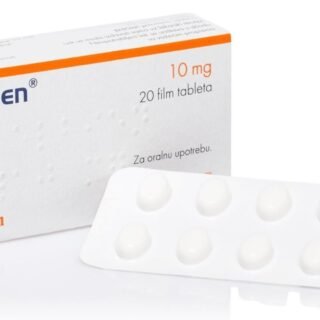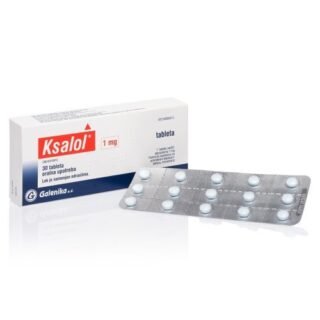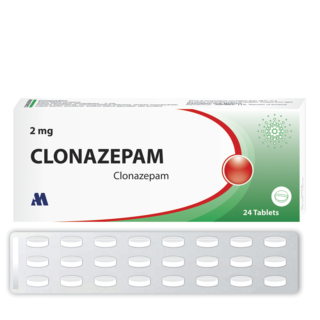
In today’s world, where the demands are ceaseless, and the technology is racing ahead, stress has become a way of life. While its psychological impacts are well acknowledged, the somatic manifestations of chronic stress are worthy of equally scrutinized focus. Through this discussion of the complex relationship between stress and its physical effects, it emphasizes the need for early recognition and treatment.
Pathophysiology of Stress Responses

The human body’s response to stress is orchestrated by the hypothalamic-pituitary-adrenal (HPA) axis and the sympathetic nervous system. Acute stress initiates the “fight-or-flight” mechanism, precipitating the secretion of catecholamines and glucocorticoids such as adrenaline and cortisol. While adaptive in acute scenarios, the persistent activation of these pathways due to chronic stress exerts deleterious effects on multiple organ systems, manifesting in a constellation of physical symptoms.
Systematic Review of Stress-Induced Physical Symptoms
1. Cephalalgia and Neurological Dysregulation
Chronic stress is a well-documented etiological factor in tension-type headaches (TTH) and migraines. The sustained contraction of pericranial muscles, coupled with altered serotonergic and trigeminovascular pathways, contributes to these conditions. Migraines, in particular, may present with photophobia, phonophobia, and nausea, necessitating differential diagnosis from primary neurological disorders.
2. Gastrointestinal Dysmotility and Dysbiosis
The gut-brain axis, a bidirectional communication network, is profoundly affected by stress. Dysregulation in this axis can manifest as functional gastrointestinal disorders, including irritable bowel syndrome (IBS). Chronic stress alters gut microbiota composition, disrupts epithelial barrier integrity, and modulates visceral hypersensitivity, resulting in symptoms such as abdominal pain, diarrhea, and constipation.
3. Sleep Architecture Disruption
Stress is a primary disruptor of sleep homeostasis, often precipitating insomnia characterized by difficulty initiating or maintaining sleep. Conversely, hypersomnia may occur as a maladaptive coping mechanism. These disturbances are mediated by hyperactivation of the arousal system and dysregulation of circadian rhythms.
4. Myofascial Tension and Pain Syndromes
Prolonged stress induces hypertonicity in skeletal muscles, particularly in the cervical and lumbar regions. This hypertonicity contributes to chronic pain syndromes such as myofascial pain and may exacerbate conditions like fibromyalgia through central sensitization.
5. Immunosuppression and Increased Morbidity
The immunomodulatory effects of cortisol include suppression of lymphocyte proliferation and cytokine production. Chronic stress thus predisposes individuals to frequent infections, impaired wound healing, and exacerbation of autoimmune conditions.
6. Cardiovascular Dysregulation
Stress-related tachycardia, palpitations, and chest discomfort are frequently reported. These symptoms, while often benign, may mimic or unmask underlying cardiovascular pathologies such as arrhythmias or ischemic heart disease, necessitating thorough evaluation.
7. Dermatological Manifestations
Psychodermatological conditions, including acne, eczema, and psoriasis, often flare in response to stress. The mechanisms involve neurogenic inflammation and dysregulated cutaneous immune responses.
8. Alterations in Appetite and Metabolic Homeostasis
Stress induces bidirectional changes in appetite through hormonal mediators such as ghrelin and leptin. Hyperphagic responses often lead to consumption of calorie-dense foods, contributing to obesity and metabolic syndrome, whereas hypophagia can result in nutritional deficiencies.
9. Persistent Fatigue Syndrome
The sustained energy demands of chronic stress deplete physiological reserves, manifesting as pervasive fatigue. This phenomenon, often refractory to rest, implicates dysregulation in mitochondrial function and neuroendocrine balance.
10. Bruxism and Temporomandibular Disorders
Stress-induced parafunctional activities, such as bruxism, can precipitate temporomandibular joint disorders (TMD). Patients often present with jaw pain, dental attrition, and headaches, warranting multidisciplinary management.
Clinical Imperatives and Preventative Strategies

Early identification of stress-induced physical symptoms is paramount in mitigating progression to chronic diseases. Interventions must be multidimensional, addressing both physiological and psychological domains.
1. Mindfulness-Based Interventions
Techniques such as mindfulness meditation and cognitive-behavioral therapy (CBT) are empirically validated modalities for attenuating stress responses. These practices modulate prefrontal cortex activity, enhancing emotional regulation.
2. Regular Physical Activity
Exercise exerts multifaceted benefits, including the reduction of systemic inflammation and enhancement of neuroplasticity. Activities such as aerobic exercise, yoga, and tai chi are particularly effective in stress management.
3. Nutritional Optimization
A diet emphasizing omega-3 fatty acids, antioxidants, and prebiotic fibers supports neuroimmune health. Conversely, minimizing refined sugars and caffeine intake reduces adrenergic stimulation.
4. Sleep Hygiene Protocols
Interventions to improve sleep quality include maintaining consistent sleep-wake cycles, optimizing bedroom environments, and employing relaxation techniques prior to sleep.
5. Therapeutic Dialogue
Engagement with psychotherapists or counselors provides a structured environment for stress processing. Techniques such as dialectical behavior therapy (DBT) can equip individuals with adaptive coping strategies.
6. Boundary Setting and Time Management
Establishing boundaries in personal and professional spheres prevents overcommitment, a significant stressor. Effective time management enhances task prioritization and reduces perceived burdens.
7. Relaxation Modalities
Practices such as progressive muscle relaxation and diaphragmatic breathing techniques mitigate sympathetic overactivation, promoting physiological equilibrium.
8. Professional Medical Consultation
Persistent or debilitating symptoms necessitate evaluation by healthcare professionals. Pharmacological interventions, including anxiolytics or antidepressants, may be indicated in conjunction with psychotherapy.
Integrating Somatic Awareness into Stress Management
Heightened somatic awareness enables individuals to discern stress’s physical manifestations early, facilitating timely intervention. Educational initiatives promoting awareness of the stress-disease continuum can empower individuals to adopt preventative strategies proactively.
Concluding Reflections
Chronic stress, a pervasive element of modern existence, manifests in diverse physical forms that often serve as precursors to systemic dysfunction. By cultivating a nuanced understanding of these manifestations and implementing evidence-based interventions, individuals can mitigate the health impacts of stress and foster resilience. As healthcare practitioners and researchers, we must continue to elucidate the biopsychosocial mechanisms underpinning stress and advocate for integrative approaches to well-being.






Leave a Reply